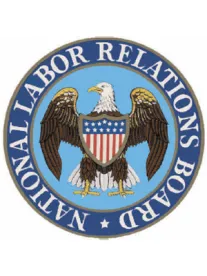On March 1, 2018, the Deputy Associate General Counsel for the National Labor Relations Board (“NLRB”) asked the D.C. Circuit to revive its review of the Obama-era Browning-Ferris Industries, 362 NLRB No. 186 (2015) (“BFI”) joint employer test in light of the Board’s February 27, 2018 decision to vacate Hy-Brand Industrial Contractors, Ltd, 365 NLRB No. 156 (December 14, 2017) (“Hy-Brand”).
In BFI, the Board announced a broad definition of “joint employer,” imposing liability and requiring bargaining in situations where a business possesses only potential and indirect control over the employees in question. BFI became arguably one of the most controversial NLRB rulings from the Obama-era Board, drawing severe scrutiny from the employer community.
BFI petitioned for review and the NLRB cross-applied for enforcement of its order. The D.C. Circuit Court of Appeals heard oral arguments in March 2017.
In December 2017, before the D.C. Circuit Court of Appeals reached a decision concerning the petition, the now Republican-majority NLRB issued is decision in Hy-Brand, which overturned the Board’s decision in BFI and restored its “direct control” joint employment standard. The NLRB asked the D.C. Circuit to remand the BFI appeal in light of the Hy-Brand decision, which the Court granted.
Hy-Brand Decision Vacated Following Ethics Report Concerning Board Member’s Conflict-of-Interest
On February 27, 2018, the Board vacated is decision in Hy-Brand and stated that “the overruling of the [BFI] decision is of no force or effect”. The reversal resulted from a report from the Board’s Designated Agency Ethics Official, the Inspector General, that Board Member William Emanuel should have been disqualified from participating in the Hy-Brand decision. Littler Mendelson P.C., Emanuel’s former law firm, represented one of the alleged joint employers in BFI when that case was before the Board. The Inspector General found that the deliberations that led to the Hy-Brand ruling were essentially a direct continuation of the BFI case, and thus should have precluded Emanuel’s involvement. In light of the ethics report, the Board exercised its discretion to vacate and set aside the Board’s Hy-Brand decision.
The NLRB argued in its March 1, 2018 motion to the D.C. Circuit Court of Appeals that the “exceptional circumstances” of the Board’s February 27, 2018 ruling gave the Court reason to continue reviewing BFI despite the Court’s previous order remanding the case to the Board. While it is relatively uncommon to recall a mandate, the unusual facts surrounding HyBrand/ BFI may warrant the D.C. Circuit to retake the reigns and finally render an appellate decision either enforcing or denying enforcement of the Board’s decision in BFI.
Future of Joint Employer Standard Even if D.C. Circuit Does Not Act
Although the Inspector General’s report applied only to the circumstances surrounding Emanuel and Hy-Brand, the Inspector General took an expansive view of what should be a recusal. Thus, it is unclear how the ethics report will impact deliberations by the Board concerning future joint employer cases. The Board is currently composed of two Democratic and two Republican appointees. President Trump’s nominee to fill the all-important fifth vacant seat is John Ring. His confirmation will restore the Republican majority. If and when Ring is confirmed by the Senate is another matter (a hearing before the Senate Health, Education, Labor and Pensions Committee concerning Ring took place on March 1 where Ring was questioned on ethics issues). Nevertheless, if confirmed by Congress, it is possible the Board could take another shot at overturning the BFI standard under certain circumstances.
The Save Local Business Act, a bill to limit joint employer liability under the National Labor Relations Act, is also pending before the Senate.
For Now BFI Is Once Again the Law Of the Land
Under BFI, a joint employer finding will no longer require proof that the putative joint employer entities have actually exercised joint control over essential terms and conditions of employment. Rather, “reserved authority” (even if not exercised) or “indirect control” may be sufficient to establish a joint employer relationship. With the return to the BFI standard, a variety of employers may be at risk of a joint employment finding under the NLRA, including but not limited to joint ventures, user-suppliers, contractor-subcontractors, franchisor-franchisees, parent-subsidiaries, predecessor-successors, lessor-lessees, and creditor-debtors. Therefore, employers wishing to avoid a joint employer finding should assess these and other corporate/employment relationships under BFI and develop a labor policy consistent with these principles after consulting with experienced labor counsel.



 />i
/>i

